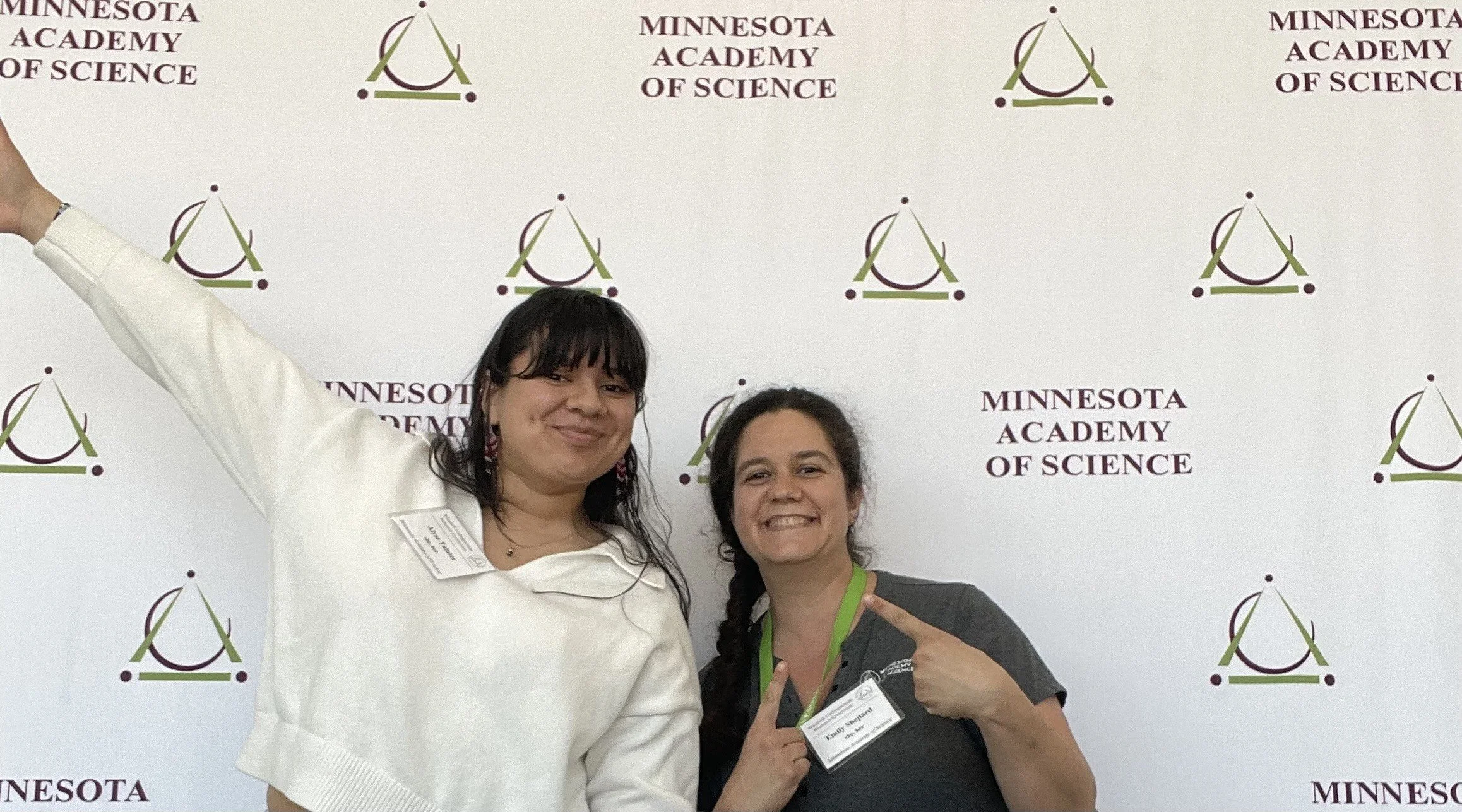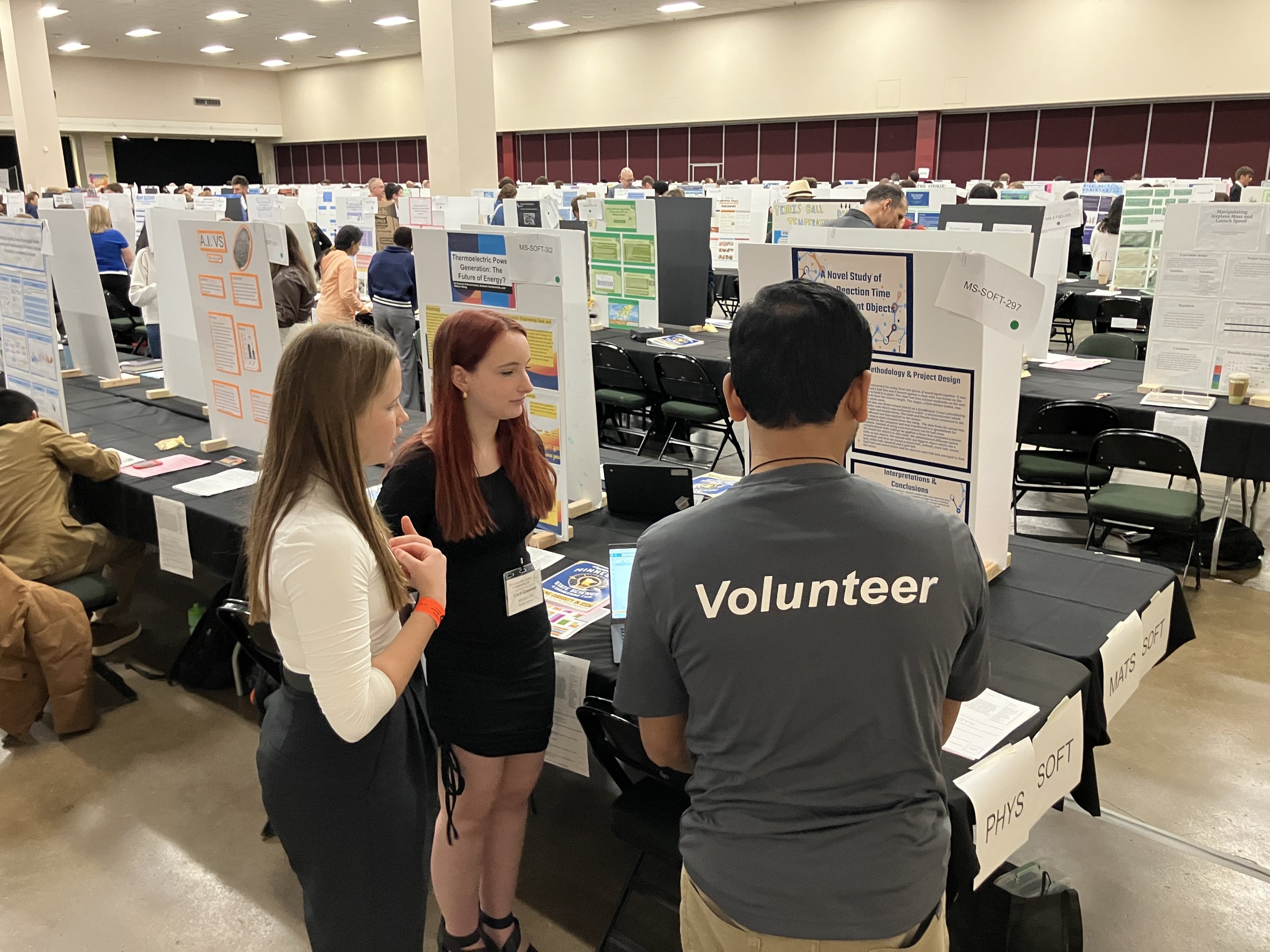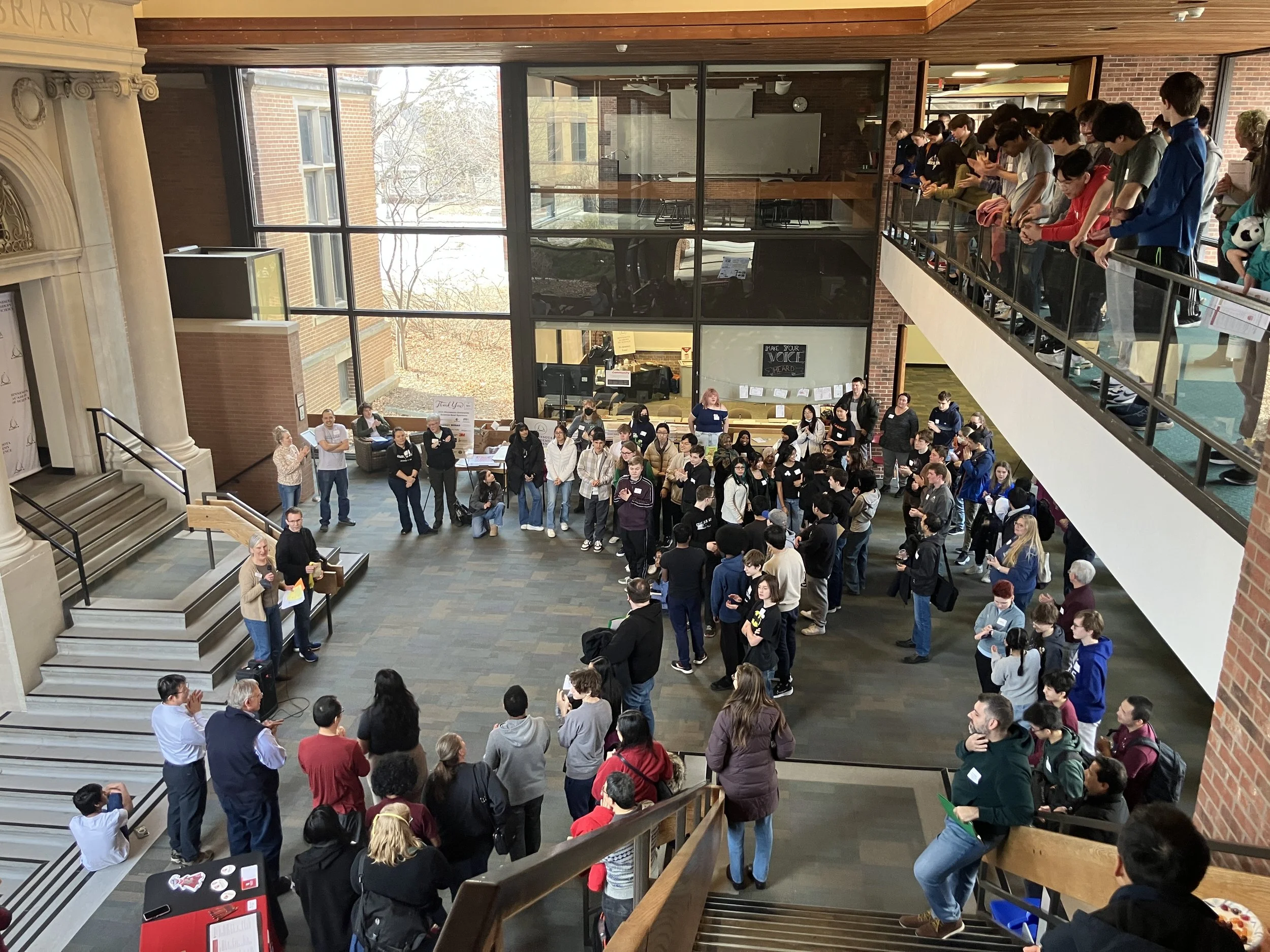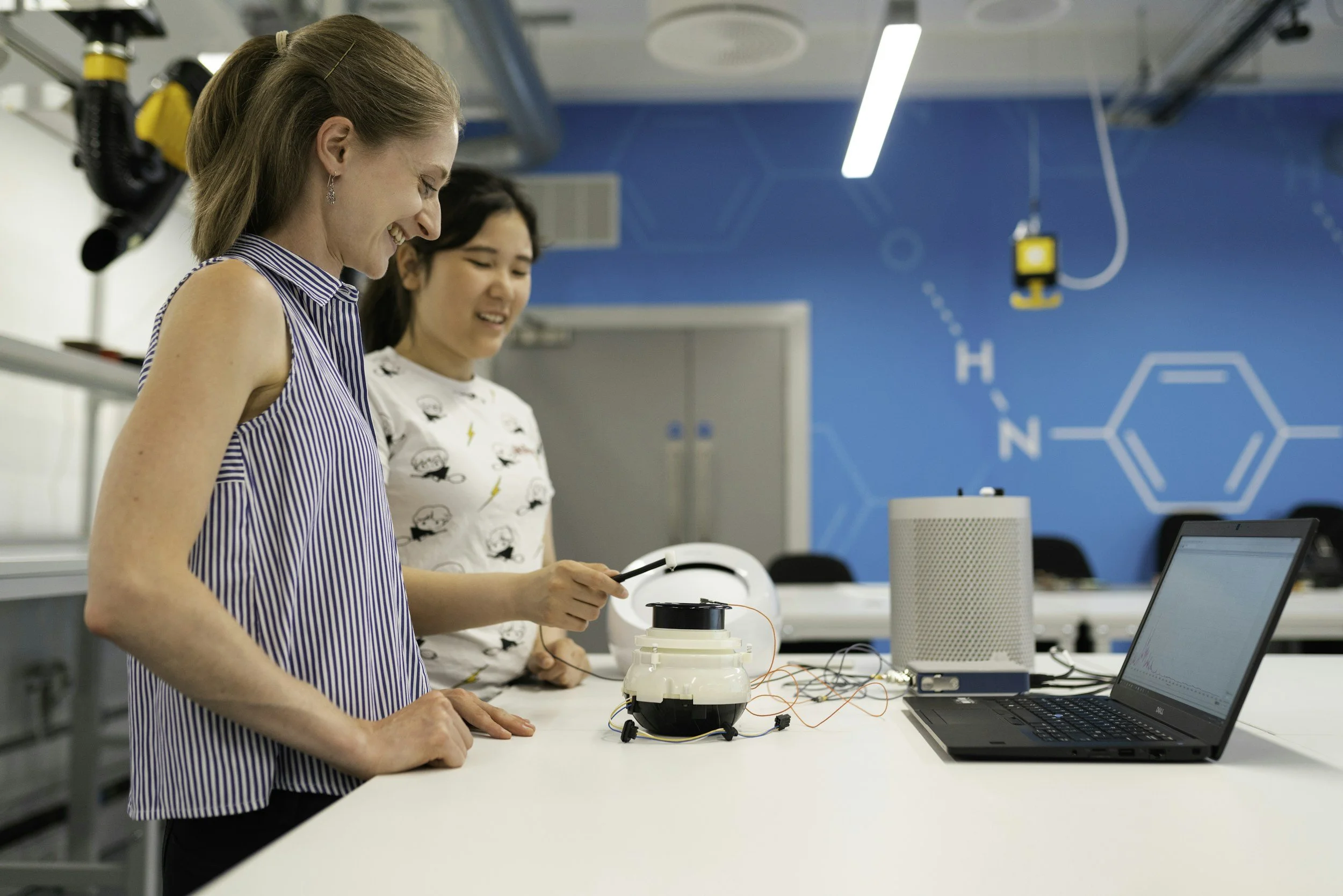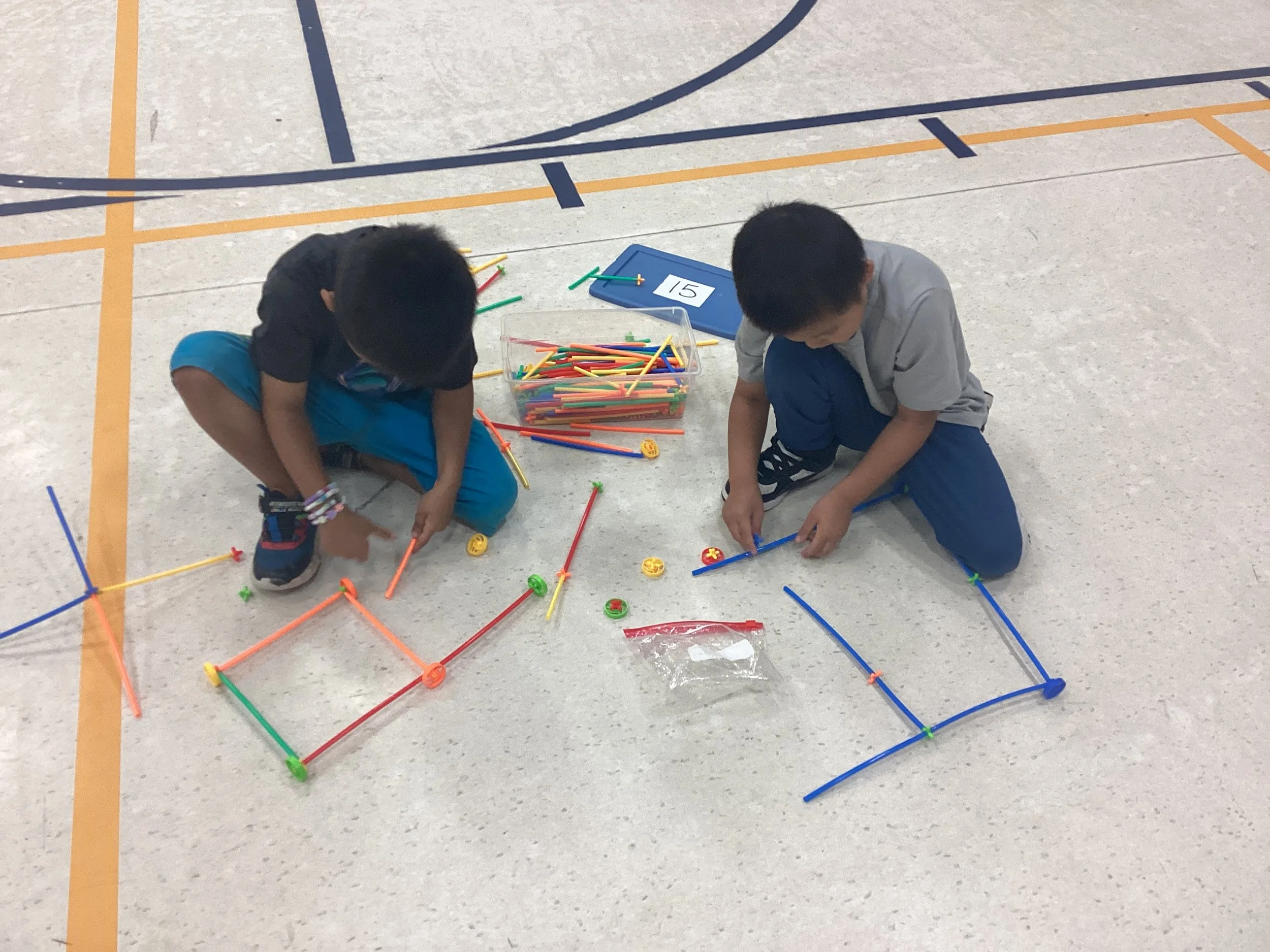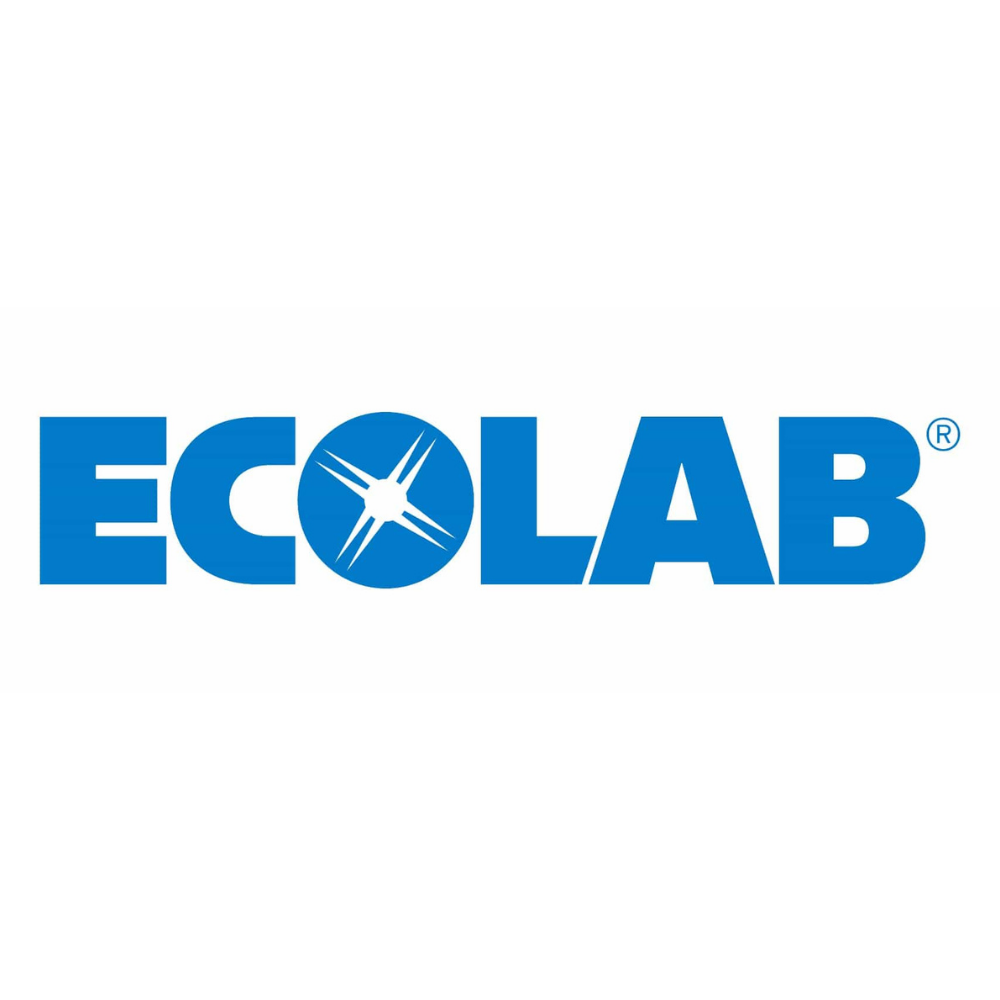One of the major benefits of the State Science and Engineering Fair (SSEF) is developing students’ abilities to conduct independent research. In fact, of our 2019 SSEF participants, 94% reported increased research skills and 86% noted their capability to work independently had improved! Students’ first flex these skills is during the initial project idea - it all begins with that moment of inspiration for a great project.
But how do our SSEF students find their creative project ideas? When we asked our 2019 participants, they revealed a wide range of sources for that elusive “aha!” moment.
School
Many of our participants noticed an issue at school and decided to investigate further. Other students began with a classroom project and chose to extend it into a more in-depth study.
Bernadette’s interest in gender stereotypes was piqued after a school assignment
Bernadette, a first-time SSEF participant, chose to research gender stereotypes when she noticed something interesting during an assignment at school where students were asked to write a poem about themselves. Girls tended to chose words like ‘kind’ and boys tended to chose words like ‘strong’. Bernadette said “it was kind of shocking to me that gender stereotypes exist. I thought that maybe I should be working to do something about it.” She hypothesized that as students aged, they would not “fit the mold as much” and gender stereotypes would lessen
““I got interested in my project after a unit in our health class where we learned about the influence that peer pressure has on teenagers’ lives.”
“I was interested in cellular and molecular biology and asked my science teacher for ideas in that category. This is where I got my topic. It was really cool to see DNA for the first time since I didn’t know what it would look like right out of a strawberry.”
“I wanted to use the data I collected to soundproof not only my own room, but to also fix the band room in my school, which has almost no sound control in it.””
Community Issues
Many students noticed an issue in their community and wanted to work on a solution. Some students gained inspiration from a family member or a problem in their neighborhood. Others sought to improve an issue in the whole country, or even the world!
Mohamed and his teammates found inspiration for their SSEF project from a worldwide issue
8th grader Mohamed was inspired to look for a way to keep food fresh longer, noting that “a lot of people in third world countries don’t have food. In the U.S., people dispose of food before they get a chance to eat it.” Mohamed and his two research partners, Aneeq and Mohammed, invented a container to keep refrigerated food fresh longer. Mohamed hopes to develop their invention further and perhaps merge it with a refrigerator. Our judges were impressed with their efforts: Hassan, Ahmed and Omer won the Lemelson Foundation Early Inventor Prize, the Seagate Emerging Scientist Award, the Ecolab Food Safety Award, and the Minnesota Academy of Science Silver Award!
““What inspired my project was, I know someone that has special needs and has an extremely hard time writing with any utensil. So I decided to make a glove that would help with the grip.”
“Whenever I go to India I lose power a lot so I found out an effective, efficient, and cheap way to produce electricity/power.”
“I am a pedestrian and I value safe and efficient crosswalks so that I can get where I need to be easily. I was in the car and I saw a sign that said something about the percentage of drivers stopping for pedestrians on a weekly basis. That inspired the research question I came up with, because I knew that what mainly made drivers stop for pedestrians was traffic control and I wanted to see how the type of traffic control affects the amount of cars that stop for a pedestrian!””
Personal Interests
Lauren and Charlie merged their shared interests in computers and music in their SSEF project
Many of our participants have that ‘aha’ moment while immersed in a favorite activity, while others find themselves called to improve something they love. Hobbies, favorite sports, and academic specialties been the inspiration for students’ projects.
Lauren and Charlie were fueled by two personal interests - computer science and music. The pair invented a new way to use augmented reality to teach bass guitar.
“““I decided to do my research project because I love rockets and I love finding out different ways to make them great. I also like doing all the experiments and messing around with the different variables.”
“I am really interested in the intersection between computer science and environmental science. Thus, my partner and I classified trees by type based on their shadows in aerial imagery.”
“I chose my topic because I am an only child and my project was all about the stereotypes I had heard about me and other only children.””
The Environment
Concern for natural resources provided a jumping off point for many of our students’ projects. Understandably in our land of lakes, many participants focused on water quality issues. Clean air, invasive species control, and soil science were also popular topics. Other students focused on increasing knowledge of a favorite animal, including baboons, horseshoes crabs, red-headed woodpeckers, and monarch butterflies.
Invasive species removal was the focus of Cassandra’s SSEF project
Cassandra, a student at Cloquet High School, has been researching invasive species removal for five years. She tested various methods of buckthorn removal, concluding that “hand cut” and “chemically cut” worked best. Neumann’s study won the Association for Women Geoscientists Student Award for Geoscience Excellence.
““I have always been interested in water pollution so when I heard how many microfibers are being put in our waters I was interested in what might happen to the fish populations.”
“Whenever I go up to my lakehouse I see all this damaging salt on the roadways, so I thought about what I could do about this.”
“I was inspired to choose my research project when I was looking for important problems happening around the world and I found a website about melting permafrost.”
“My family does lots of laundry, so I wanted to see how my family is affecting the environment with laundry detergents.””
Health
Christine choose to study breast cancer
Furthering research on health and medicine provided a strong impetus for many students. Interestingly, participants often cited health issues encountered by family or friends as how they became engaged in their topic.
Christine earned the DiaSorin Inc. Award by studying the connection between breast cancer and natural products. Her favorite thing about science fair was “connecting with people who share the same interests.”
““I wanted to learn more about why students in our school fell sick so often and if desks had bacteria on them that made students sick.”
“My grandmother has diabetes so I wanted to better understand the subject. I knew pancreases and glucose had to do with diabetes so I decided to test that. I made my artificial pancreas and then created my tests.”
“My cousin has diabetes and I wanted to investigate further.””











